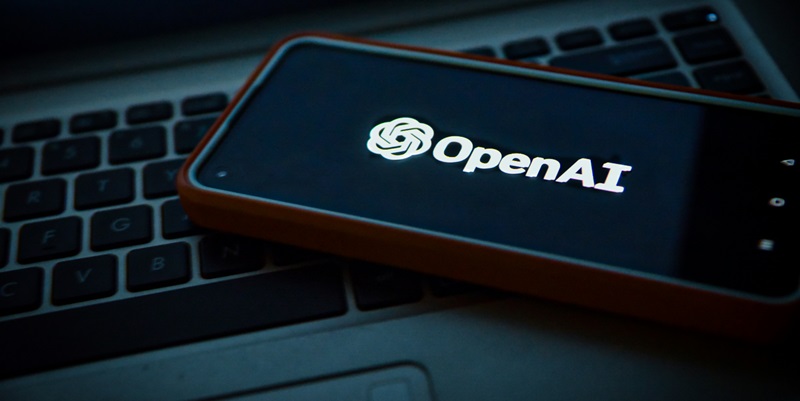OpenAI’s commitment to AI safety has led to the development and refinement of red teaming methods, a structured approach involving both human and AI elements to identify potential risks and vulnerabilities. Historically, OpenAI relied predominantly on manual testing by individuals who would probe for weaknesses in new systems. This was evidenced by their efforts during the testing of the DALL·E 2 image generation model in early 2022, where external experts were invited to pinpoint potential risks. Given the rapidly evolving landscape of AI, OpenAI has expanded and enhanced its methodologies, aiming for more comprehensive risk assessments that incorporate automated and mixed approaches.
In their latest endeavors, OpenAI has shared significant advancements through two important documents on red teaming. The first, a white paper detailing external engagement strategies, and the second, a research study introducing a novel method for automated red teaming. These documents are designed to bolster the red teaming process, ultimately leading to safer and more responsible AI implementations. Understanding user experiences and identifying risks such as abuse and misuse remain crucial for researchers and developers. Red teaming serves as a proactive method for evaluating these risks, with insights from a range of independent external experts significantly contributing to the process.
1. Formation of Red Teams
The formation of red teams is fundamental to the red teaming process at OpenAI. The selection of team members is tailored to meet the objectives of the campaign, ensuring a comprehensive assessment by including individuals with diverse perspectives. This diversity encompasses expertise in areas such as natural sciences, cybersecurity, and regional politics. By bringing together experts from various fields, OpenAI ensures that the assessments cover the necessary breadth and depth, allowing for a more holistic evaluation of potential risks.
Diverse perspectives are crucial because they help identify vulnerabilities that might not be apparent from a single disciplinary viewpoint. For instance, a cybersecurity expert might focus on identifying technical exploits, while a natural sciences expert could assess the environmental impact or ethical considerations. Regional politics specialists can provide insights into geopolitical ramifications, ensuring that the AI models are robust against a wide array of challenges. Together, these varied perspectives form a powerful collective capable of uncovering and addressing a wide range of potential issues.
2. Access to Model Versions
The versions of the models that red teamers will access play a significant role in the outcomes of the red teaming process. By clarifying which model versions are to be tested, OpenAI can influence the type of insights gained. Early-stage models may reveal inherent risks that are crucial for developers to address in the initial phases. These early insights can highlight fundamental flaws or overlooked vulnerabilities that need attention before the model’s release.
Conversely, more developed versions of AI models help identify gaps in the planned safety mitigations. These later-stage models are closer to the final product and can provide a clearer picture of how well safety measures are functioning. By exposing these versions to rigorous testing, OpenAI can assess whether the implemented safeguards are effective or if there are areas that still require improvement. This dual-stage approach ensures that potential risks are identified and rectified throughout the development process, leading to more robust and safer AI systems.
3. Guidance and Documentation
Effective guidance and documentation are essential components of the red teaming process. Clear instructions, suitable interfaces, and structured documentation facilitate seamless interactions during the campaigns. By providing detailed descriptions of the models, existing safeguards, and testing interfaces, OpenAI ensures that red teamers have all the necessary information to conduct thorough assessments.
Documentation also includes guidelines for recording results, which is crucial for post-campaign analysis. Detailed and structured documentation helps in synthesizing the data, allowing for a comprehensive evaluation of the findings. Clear guidance ensures that all participants have a common understanding of the objectives and methodologies, reducing the likelihood of misinterpretation and errors. This structured approach not only enhances the efficiency of the red teaming process but also ensures that the findings are reliable and actionable.
4. Data Synthesis and Evaluation
Data synthesis and evaluation are the concluding stages of the red teaming process. The generated data from red teaming activities undergo a thorough analysis to identify patterns, trends, and significant findings. This evaluation provides actionable insights that are crucial for refining AI systems and improving their safety.
OpenAI employs a meticulous approach to data synthesis by aggregating feedback from diverse red team activities. This includes assessing risk profiles, identifying common vulnerabilities, and prioritizing areas for immediate attention. The evaluation also cross-references findings with existing safety measures to ensure continuity and effectiveness.
The synthesized data informs a strategic plan for further improvements. This ongoing cycle of testing, evaluation, and refinement underscores OpenAI’s commitment to advanced AI safety protocols. By leveraging comprehensive data analysis, the company ensures that its AI systems can withstand various risks and operate within safe and ethical parameters.

